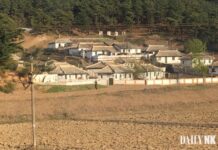The stabilization of civil society and the North
Korea military must be a top priority for the South Korean government after it declares
its jurisdiction and martial law over the North Korean region. Stabilization,
or pacification, of the military will involve restoring public order, as well
as disarming the North Korean military, securing the borders, and transporting and
distributing vital goods throughout North Korea. The greater task will be
military disarmament. North Korea’s current military comprises 1.2 million regulars
and 780,000 reserves. Included among the regulars (due to the fact that they have weapons) are 200,000 special forces, 210,000 Ministry of People’s Security forces, 100,000 civilian employees, and
between 50,000 and 90,000 State Security Department forces.
The Korean government should deploy its
military forces all throughout North Korea after disarming North Korea’s military, thereby following the German government’s precedent. DDR
(Disarmament, Demobilization and Reintegration) should be the model for
pacifying the North Korean military. The last stage, reintegration, will be
particularly important. Former soldiers who are unsuccessfully reintegrated
have a higher likelihood of joining criminal organizations or rebel forces.
Iraq is the best example, as unarmed and discharged Iraqi soldiers who could
not find employment subsequently joined anti-US forces.
Professor Bruce Bennett classifies reintegration
into integration into the civilian society, into the military, and into public
services. Integration into civilian society will only be possible for those who
have employable skills and can find employment in the private sectors, for
instance, as scientists or engineers. Reintegration for such soldiers will not be
very difficult.
Integration into the military means that
all active North Korean soldiers must be integrated into the South Korean military. This
could include 20% of North Korea’s military, and they could be used to
support the effort of disarmament, securing military hardware, and fighting
rebels and criminals. Integration into the military will further involve
military reorganization, selective absorption and retraining of soldiers,
maintenance of military bases and equipment, mine removal, and other tasks. The
number of those include in this group can be decreased from 20% to 10% in one
year, and then to between 3% and 5% in three years. Most conscripted soldiers should
be discharged immediately, while professional soldiers and those with long term
service should be selectively retained as happened in East Germany.
Integration into public services means to
immediately involve them in infrastructure construction and maintenance. Most
roads in North Korea have not been paved, and having paved roads will
facilitate the movement of personnel and goods.
The success of DDR will also depend on
other measures designed to ensure a sufficient living standard for soldiers.
Such measures can include education and career services to assist them in
achieving independent lives and becoming productive citizens.
Military pacification must be carried out
alongside humanitarian assistance, reconstruction, and societal pacification,
which are measures aimed at building and maintaining public order. Humanitarian
assistance means providing medical and educational assistance, drug addiction
treatments. Reconstruction means building institutions that are necessary to a
well-functioning society, such as the free market, judiciary, police, customs,
and banks, in addition to roads, electrical grid, bridges, hospitals,
and schools. Societal pacification means weapon collection, rebel suppression,
etc.
The allied US-Korean forces must have one
joint aim of stabilizing North Korean society so that the Korean government can
fully concentrate on the integration of politics and economy. Initially, the
allied forces must confine key members of key institutions and the Workers’ Party,
either through prisons or house arrests. After the political system has been
integrated, these members must be dealt with by an official truth commission
which will operate on the rule of law. The commission will later be examined in
greater detail. The Workers’ Party and select state institutions must be disbanded.
Nonetheless, mid-low rank Party cadres,
as well as state institutions that have not been dismantled, must be allowed to
carry on their ordinary functions in order to maintain societal order and
prevent its collapse.
















